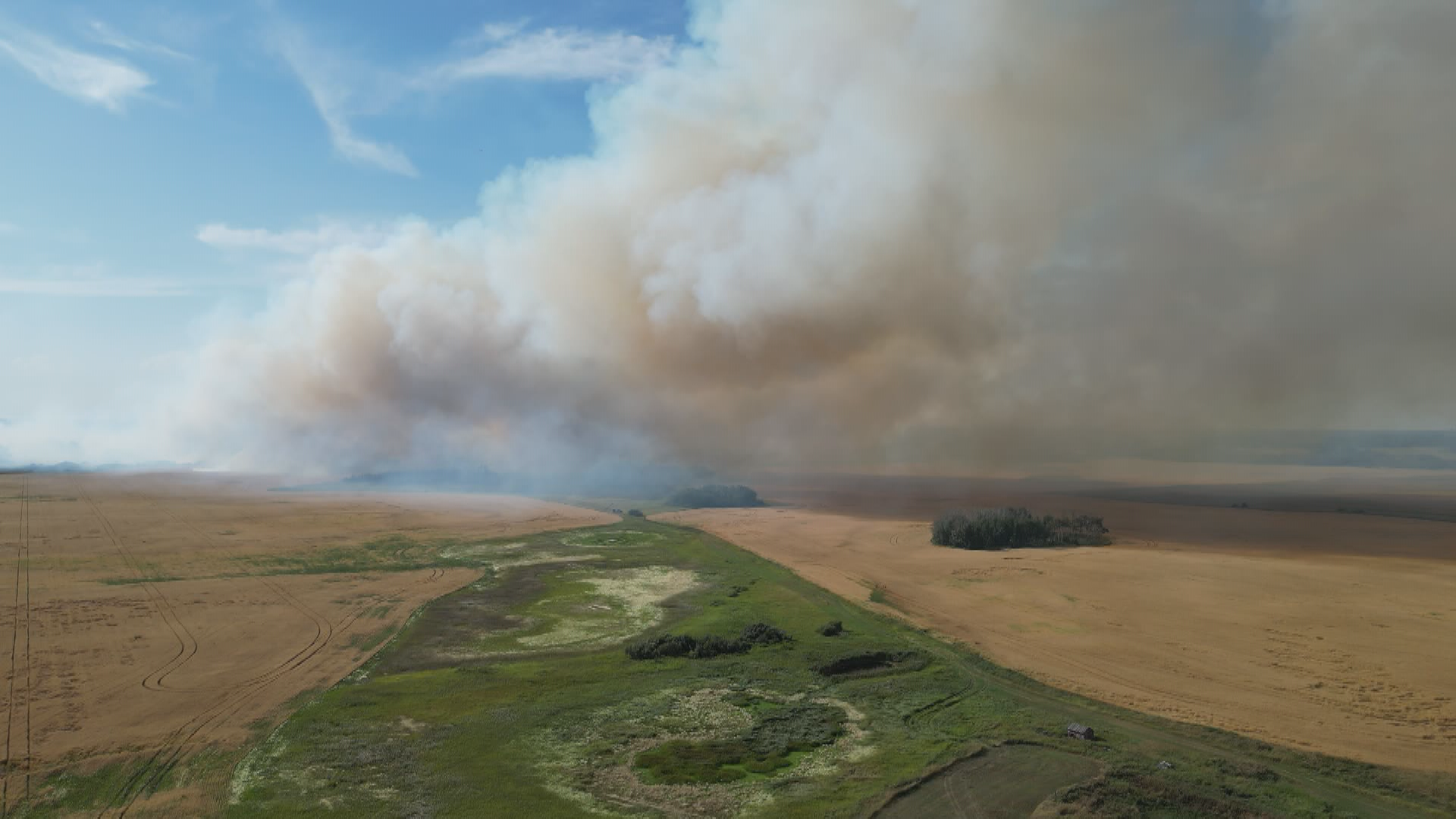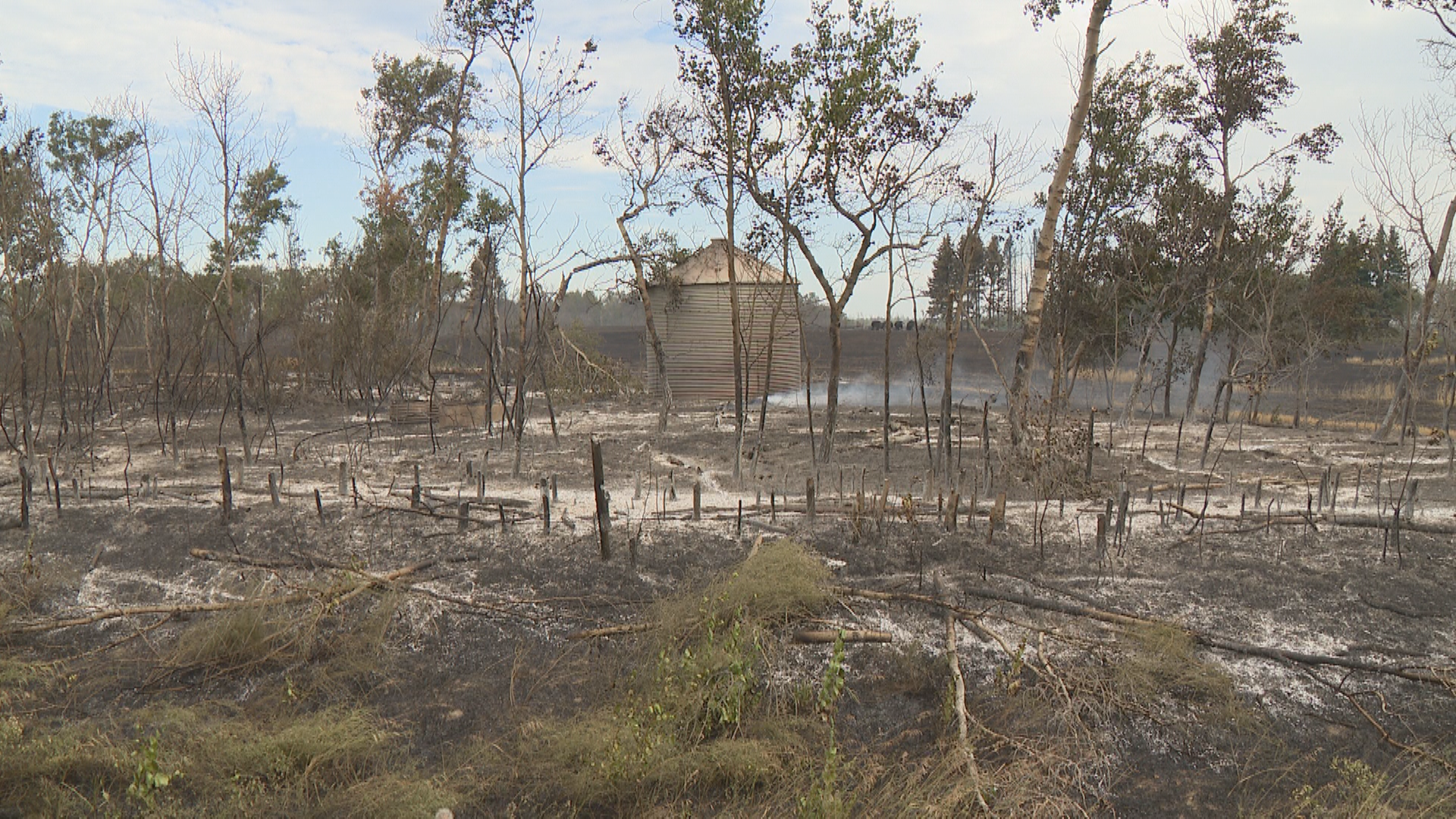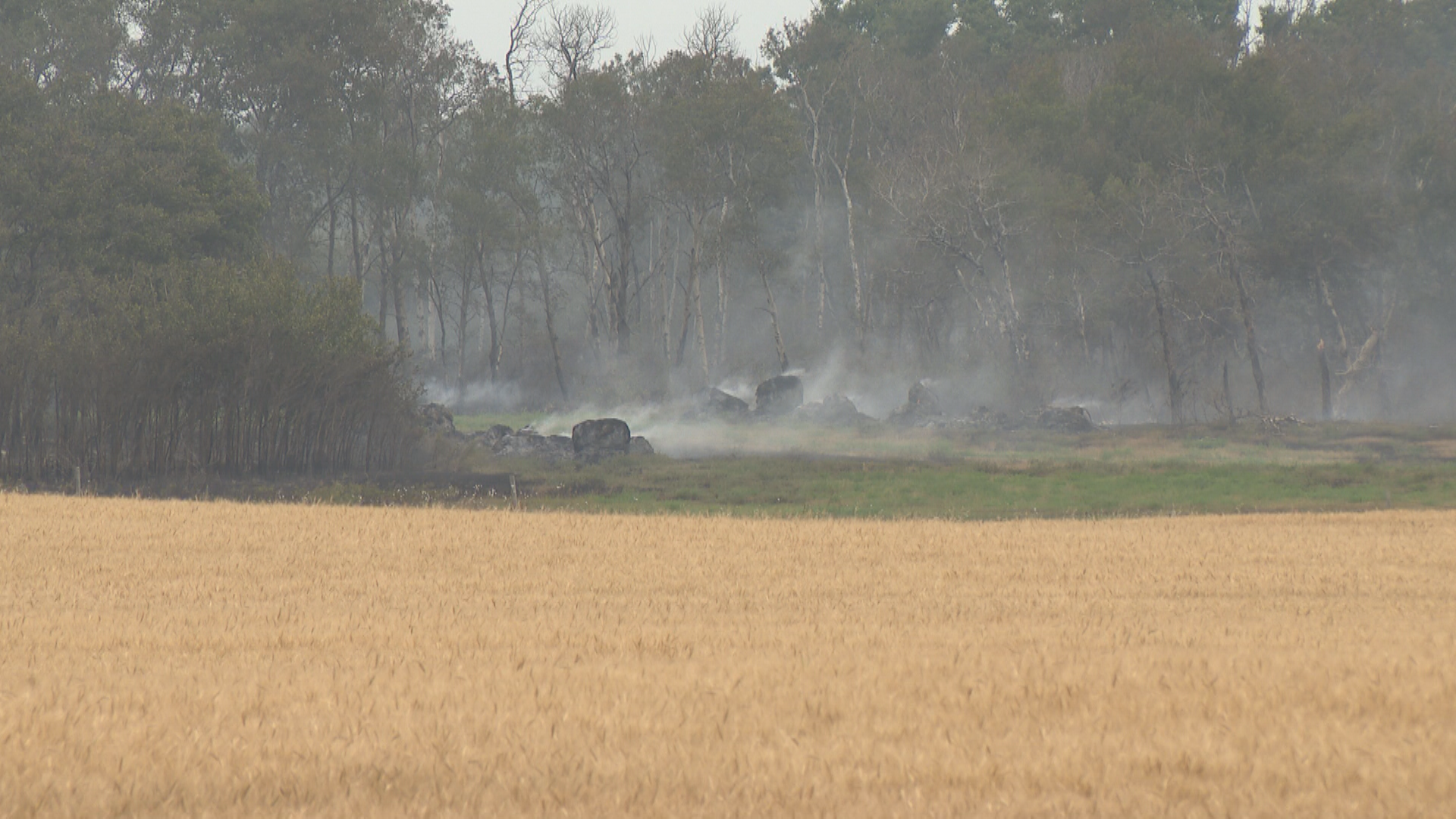A grass fire that started just south of Saskatoon on Tuesday afternoon caused upwards of $3 million in damage.

The fire began at around 3:35 p.m. in a field between Highway 11 and west of Victor Road, but plumes of smoke were seen throughout the city.
The fire spread quickly to both the north and the south and at its peak reached nearly a hectare in size, Saskatoon fire said.
The fire spread to nearby homes, vehicles and accessory buildings.
Saskatoon’s deputy fire chief put the damage estimate at $2.5 to $3 million.

Get daily National news
“The approximate list was a house with an attached garage and large shop, a detached garage, two to three medium outsized buildings, six vehicles including a motorhome, four trailers and other small pieces of equipment such as a Bobcat,” Rob Hogan said.
While it was able to defend multiple structures, the fire department said many assets were still lost due to the “fast-moving wind driving the fire.”
The fire was brought under control around 2 a.m. on Wednesday.
RCMP said the fire is non-suspicious and determined it started when a farmer was combining in their wheat field.
Saskatoon fire confirmed there were no injuries.
Saskatoon fire says that though the fire is under control, some hot spots remain.
“If there’s still something like a hay-bale or something burning in there, we just leave it because it’s going to take forever to put it out. So there is still some hot spots out there but they’re in an area that’s contained and they’re not going to go anywhere,” Hogan said.
Saskatoon fire added that the crews attacking the fire struggled with limited water supply with no fire hydrants available.
Fortunately, a private company brought in a trailer carrying about 30,000 gallons of water to help out, and the Clavet Fire Department also assisted.
Additionally, Saskatoon fire said even some local farmers helped their firefighting efforts.
“A number of the local farmers came with tractors and big 14- to 20-foot diskers behind them, so that helped us. A lot of that area is wheat field so they were able to go through the wheat field, knock it down and create a fire break for us so that the fire wouldn’t spread,” Hogan said.
Hogan says overall, this year has been an average to below-average year for grass fires in the area.
— with files from Mackenzie Mazankowski, Global News











Comments